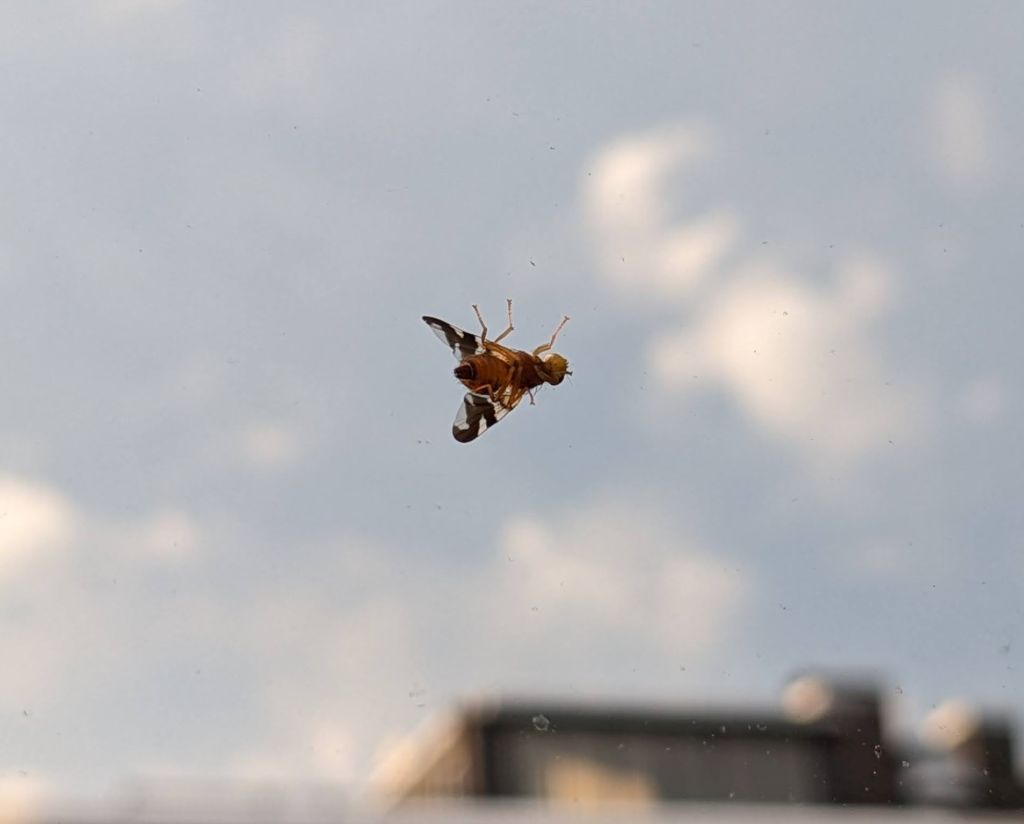
31 August 2024
After yesterday evening’s rainbow a “triangle fly” landed on our dining room window and spun its body slowly like a top. Google Lens identified it as genus Rhagoletis, a member of the fruit fly family Tephritidae.
There are about 25 species of Rhagoletis native to North America, each with its own host fruit. Those who eat the fruits we grow commercially, such as cherries and walnuts, are considered agricultural pests.
Since my photo shows the bug’s underside, Google Lens picked up on the yellow body and identified it as the walnut husk fly, Rhagoletis completa, though it may have been a different species such as the closely related Rhagoletis suavis. There are black walnuts in Pittsburgh’s parks so these species are possibilities.
Here’s a topside view of Rhagoletis completa.
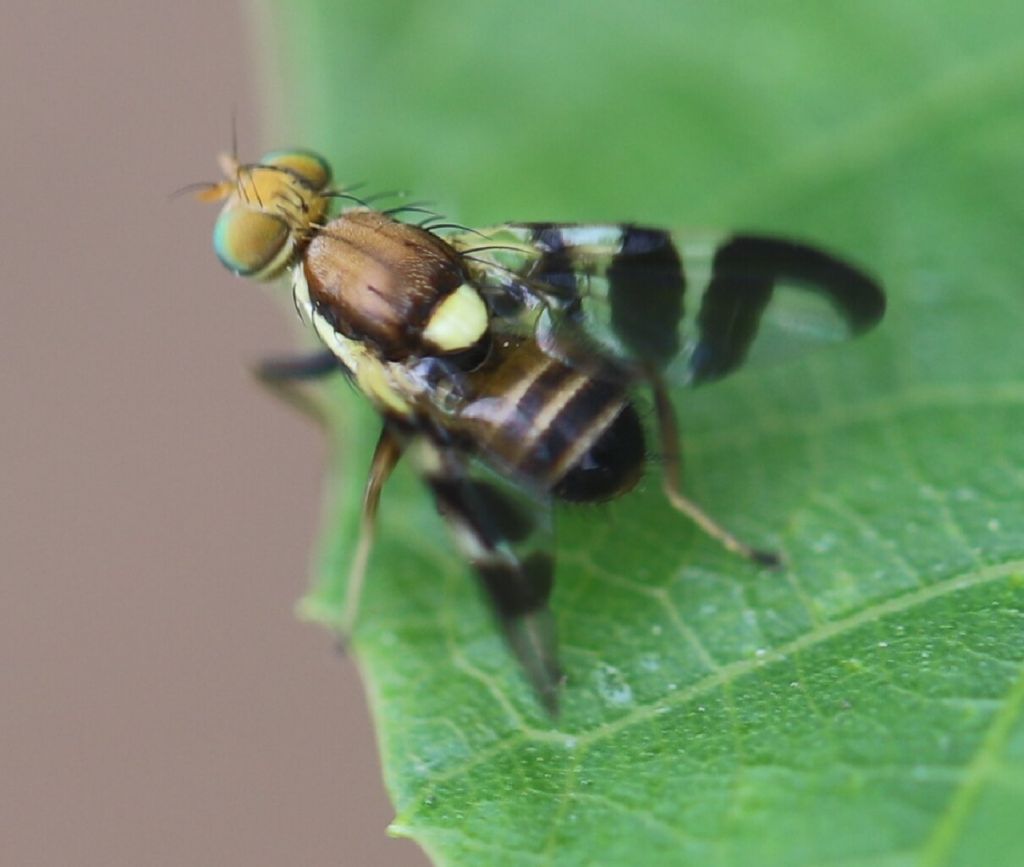
Adult female Rhagoletis inject their eggs into the host fruit so that the larvae have something to eat when they hatch. If you open an infested fruit it looks like it has maggots. Here’s a walnut husk (yes, it’s a fruit) with R. completa larvae in it.
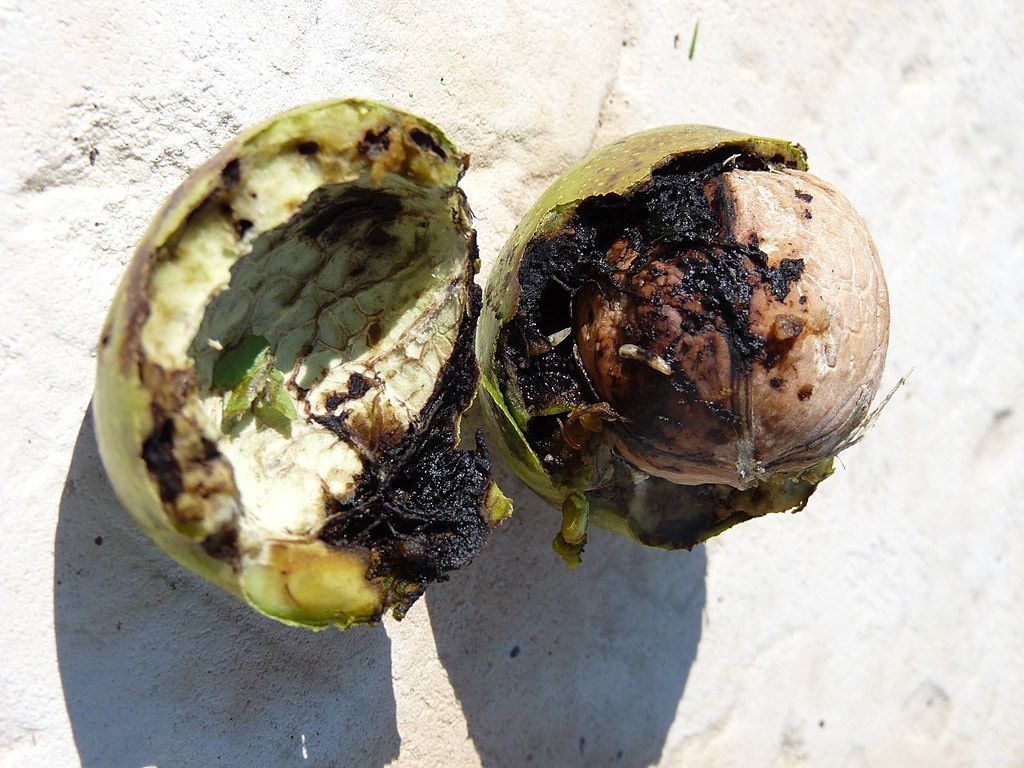
Perhaps that’s why we occasionally see rotting black walnut husks on the ground.
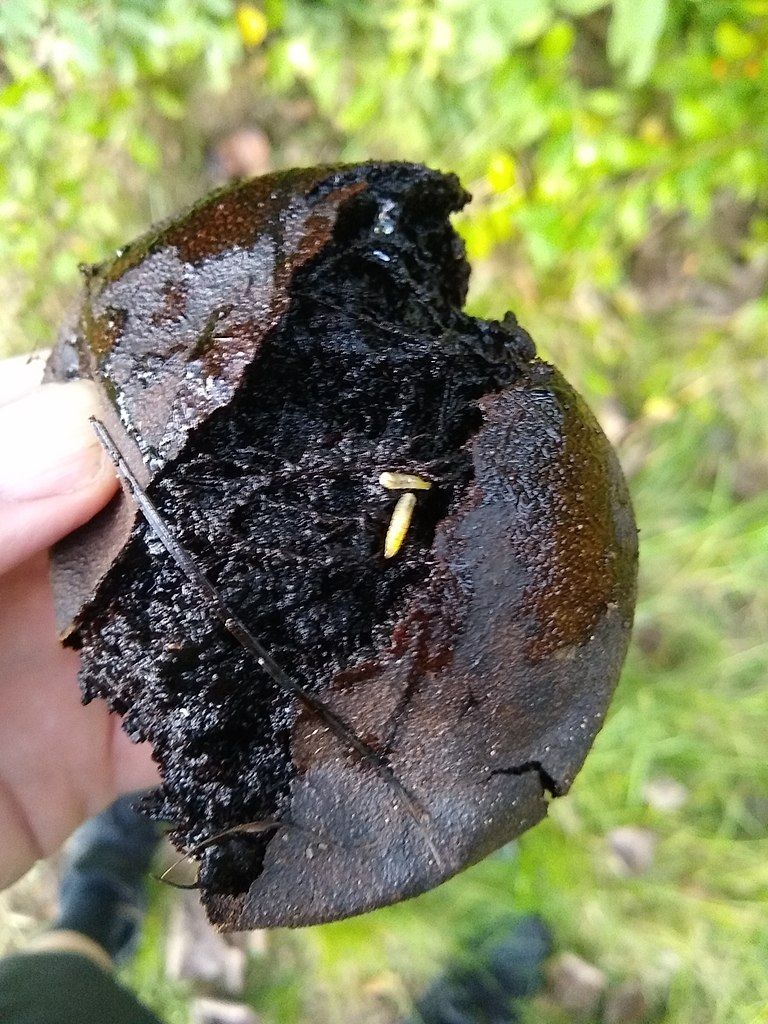
Rhagoletis are preyed upon by jumping spiders!
Some species mimic jumping spiders. The wing-waving apparently deters the approach of jumping spiders, important predators of the flies. Other species have brightly-patterned bodies, and may mimic wasps.(3)
“Spider predation has been intense enough to mold the evolution of prey characteristics: predation by salticids (jumping spiders) has shaped the morphology and behavior of some tephritid flies. Their wing markings resemble the pattern of the legs of jumping spiders; the flies also wave their wings in a fashion that appears to mimic the agonistic behavior of salticids – making them ‘proverbial sheep in wolf’s clothing’.”(8)
— bugguide.net: Rhagoletis account
Could this native North American jumping spider be a predator of our Rhagoletis flies? Do you see a resemblance between its angled legs and the pattern on the fly’s wings?
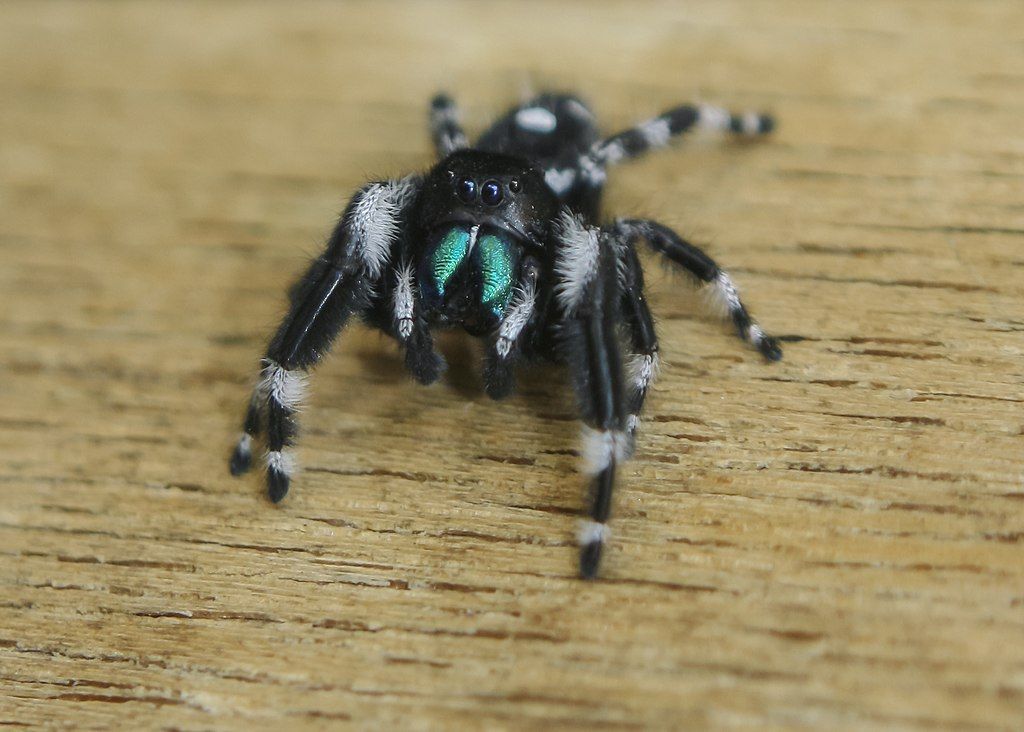
The triangle fly has opened a whole new area of inquiry.